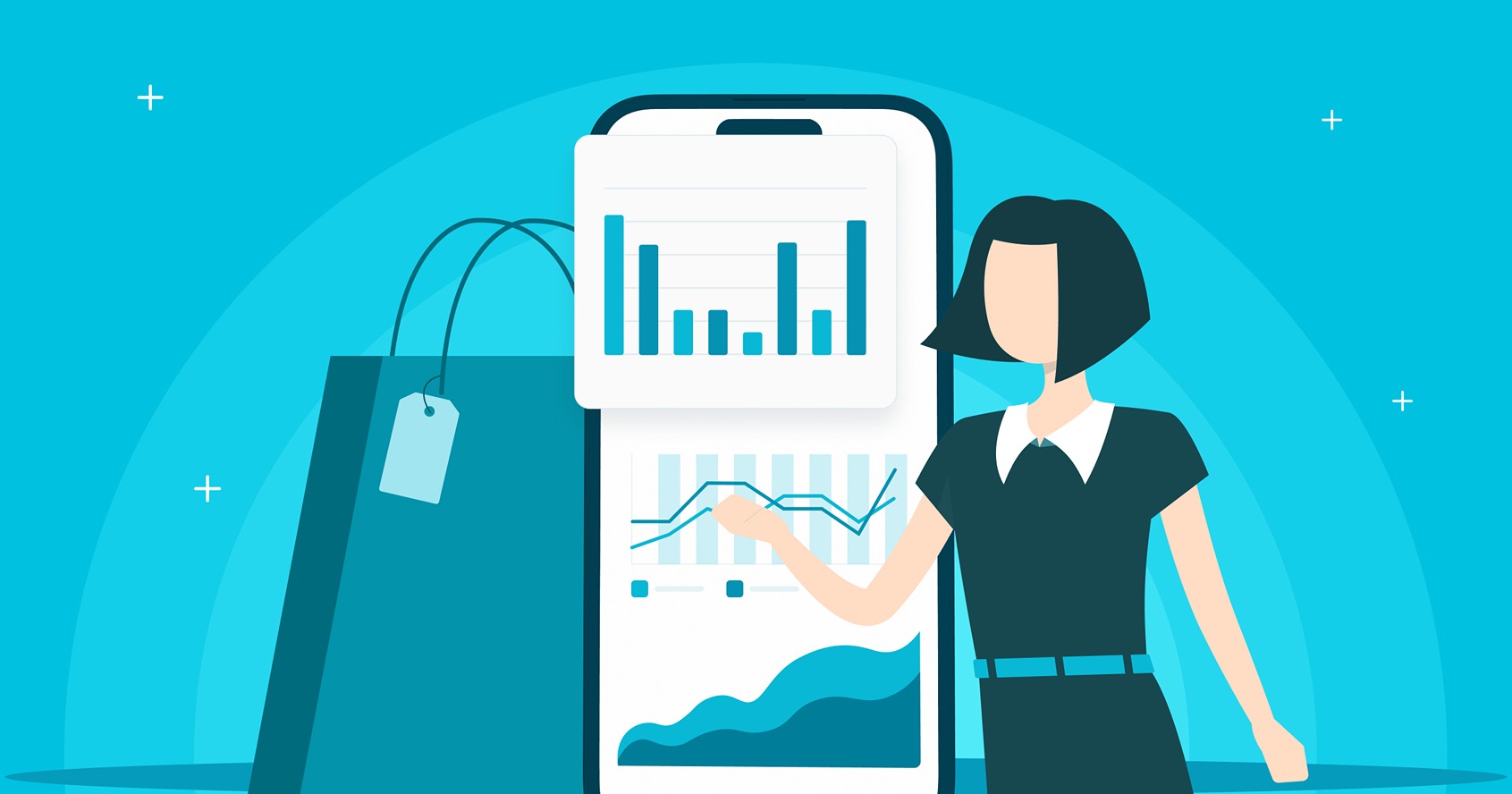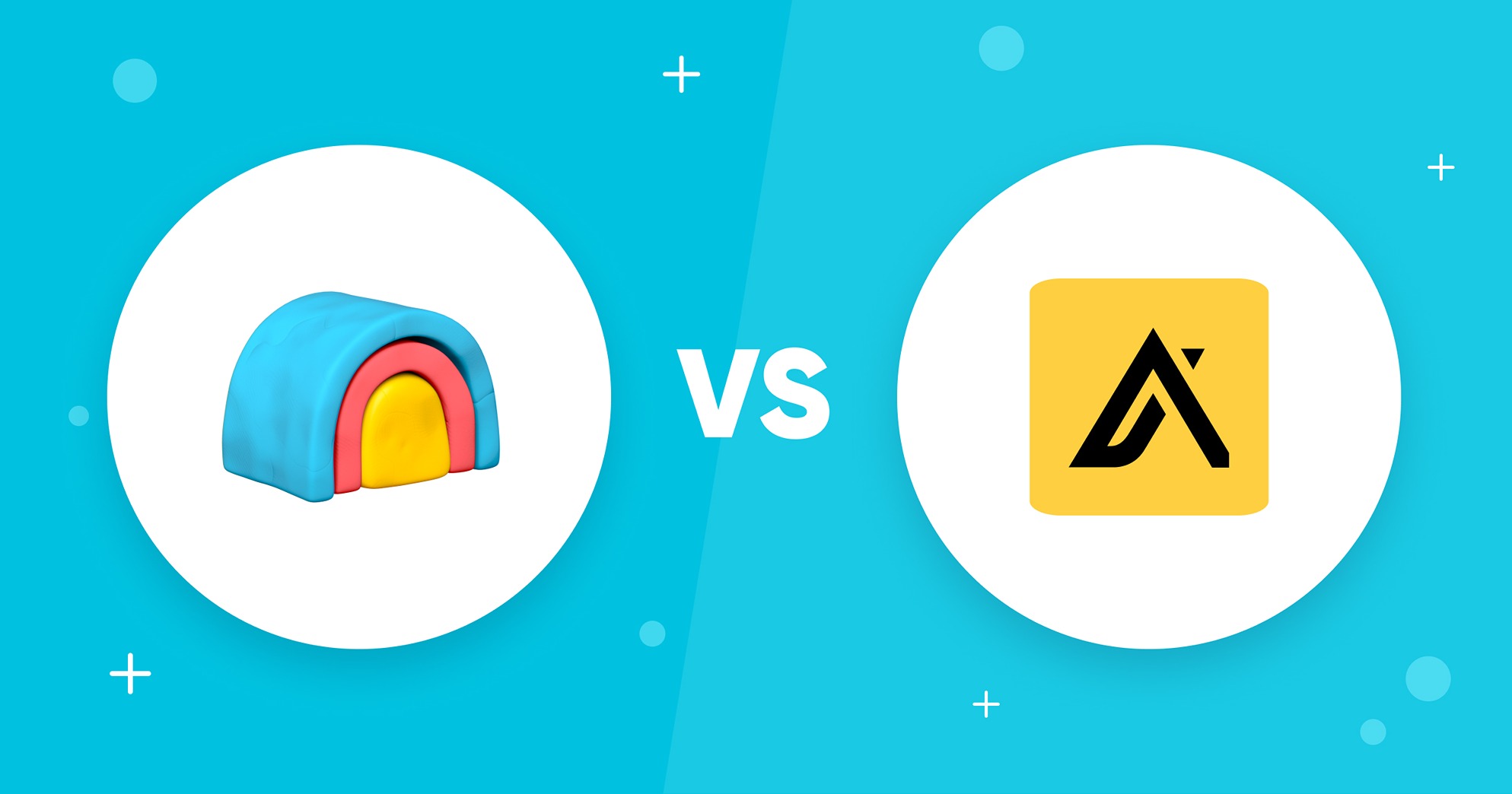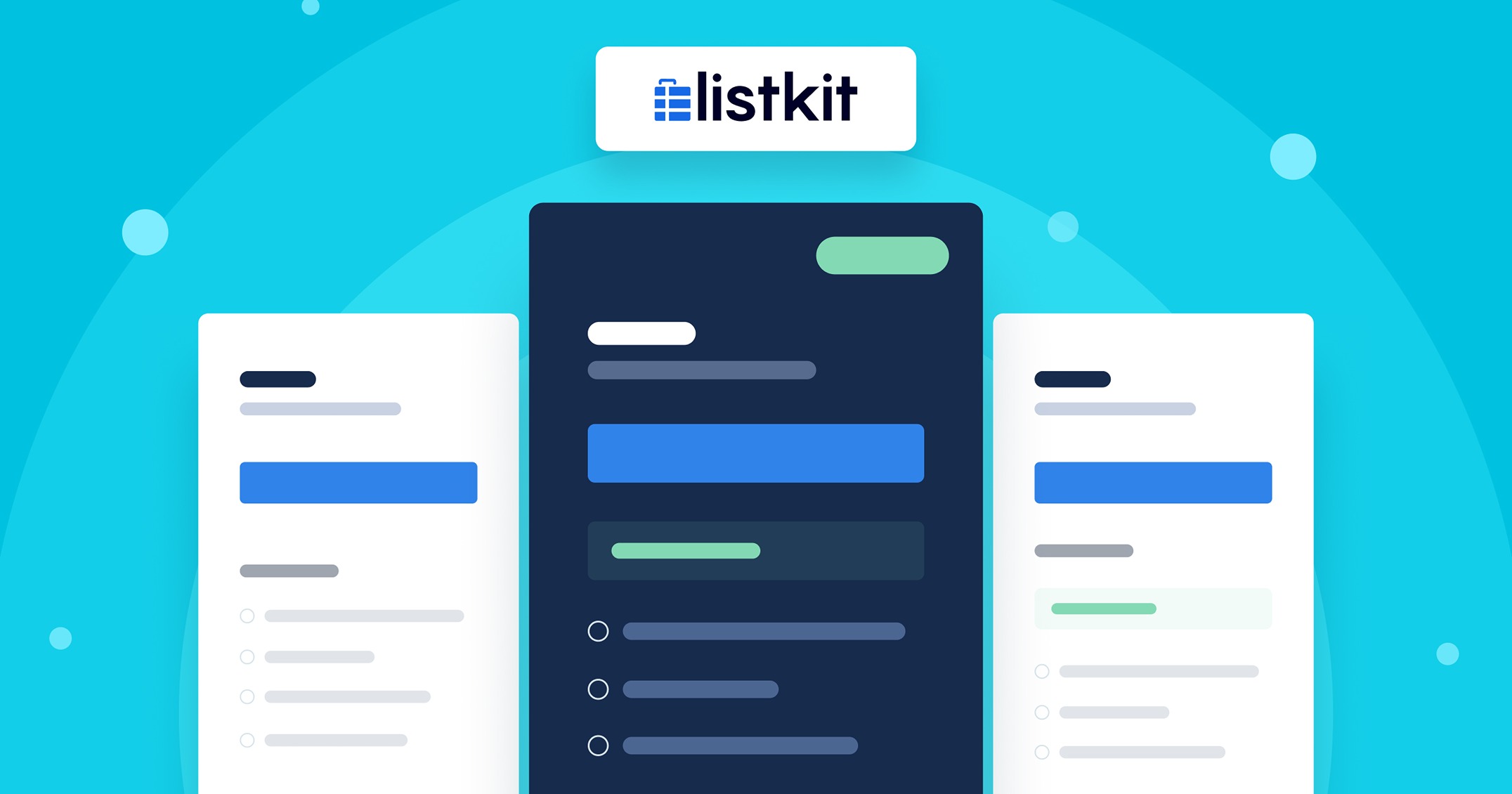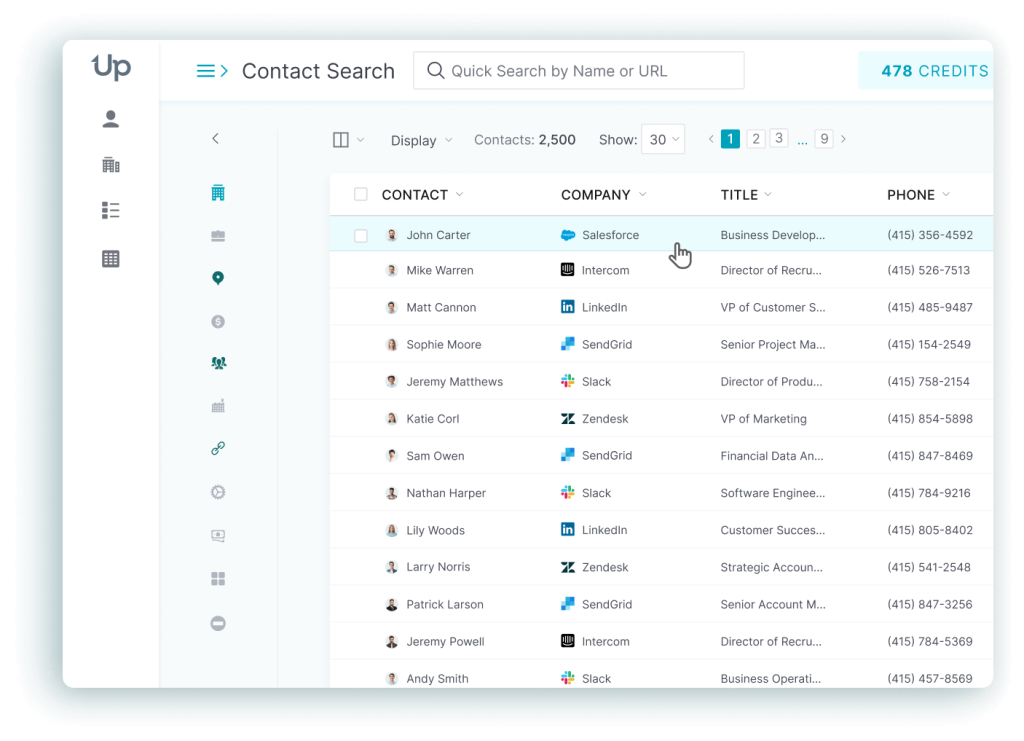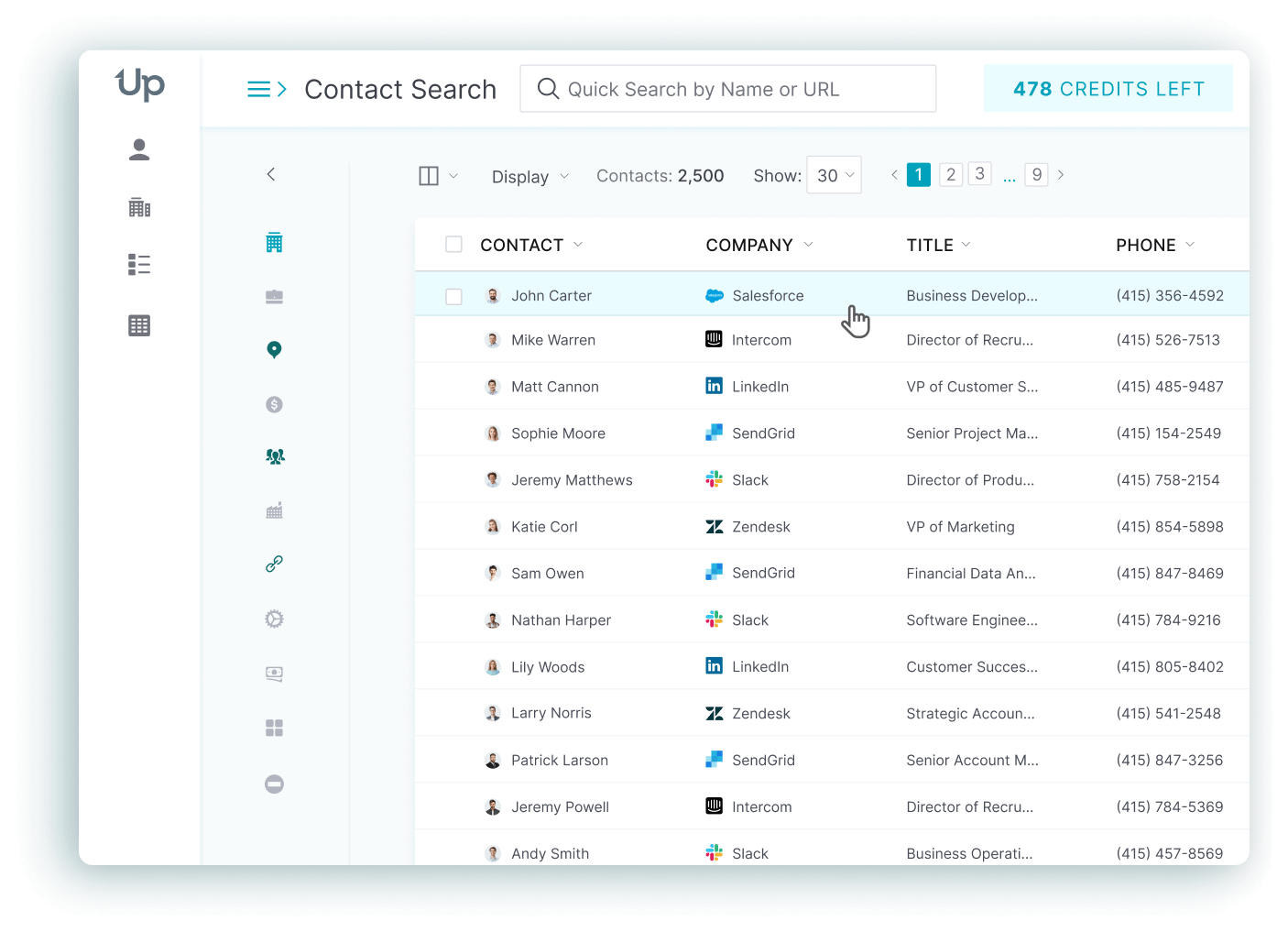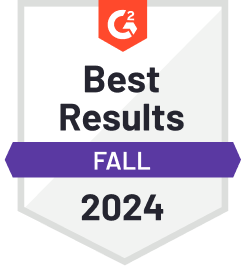Sales intelligence tools can make or break your strategy. These platforms provide the backbone for informed decision-making, streamlined outreach, and meaningful connections, regardless of where a prospect is in the sales funnel.
Both ZoomInfo and 6sense are well-known sales intelligence tools on the market today, although they serve a vastly different customer base. In this comparison guide, we’ll break down pricing, features, and so much more to help you decide which platform may be best for your business.
6sense vs. ZoomInfo Overview
Here’s a brief overview of what each tool has to offer. We’ll explore each in detail throughout the article, but it’s always good to start with a high-level review to get an overall sense of each platform and what they can offer.
6sense
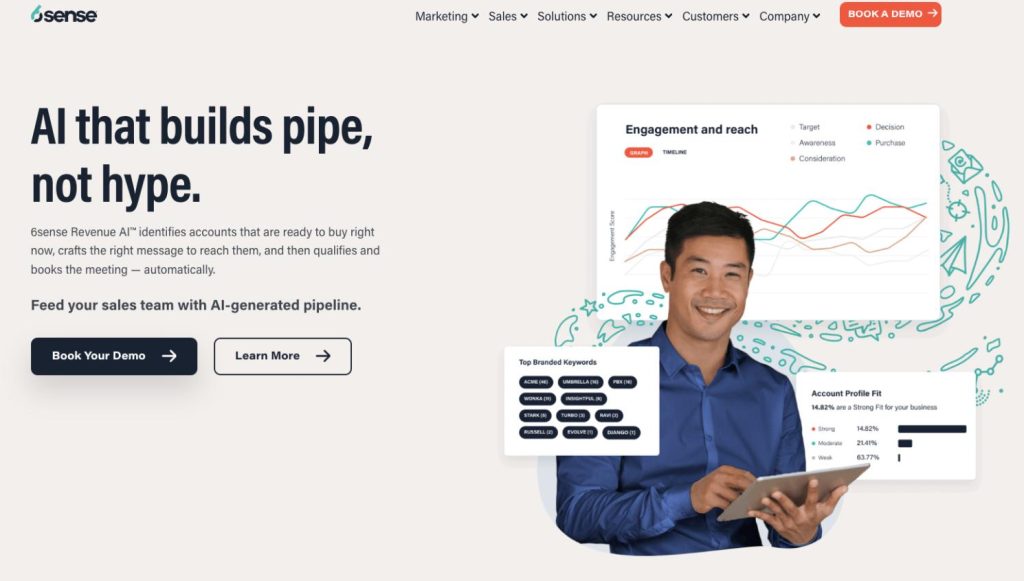
While the lesser known of the two, 6sense is still a strong contender in the lead generation marketplace. Focusing on harnessing the power of AI, the tool removes a lot of the manual work that you might expect with similar platforms. 6sense focuses on automation and predictive analytics to provide curated lists of accounts by industry.
The platform enhances account engagement through personalized content and enhanced account-based marketing tools. If your sales and marketing team likes to leverage ABM practices, 6sense may be a great tool to use.
ZoomInfo
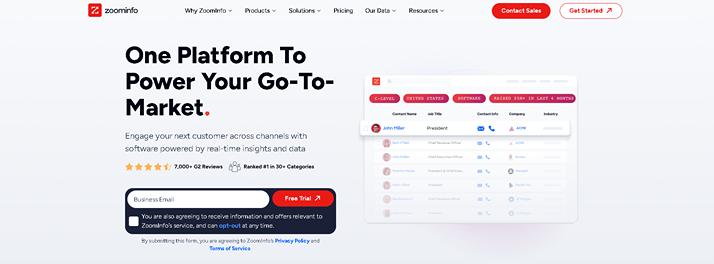
One of the leading B2B databases on the market, ZoomInfo is a global powerhouse. Designed to serve large, complex sales organizations, ZoomInfo has a host of tools and features to help teams grow and scale. The platform has some powerful features, and while it can be complex to implement, it’s a flexible platform once it’s set up. Some top features include CRM integration, lead building, data management, and more.
ZoomInfo also provides some tools, including Engage, Intent, and Chorus, which we’ll explore a bit later in the article.
What is the Difference Between ZoomInfo and 6sense?
The main difference between ZoomInfo and 6sense is the approach to lead generation. ZoomInfo focuses on individual contact lead generation, while 6sense focuses on strategic account targeting. There are many other differences between the platforms, but it’s important to understand this key fundamental difference in approach.
Understanding and leaning into your marketing strategy (lead generation vs ABM) is the key to choosing which is right for you. Users will also find significant differences in the tools and features available, the usability of the platform, and pricing. Here’s a breakdown of their primary differences:
Primary Focus:
- ZoomInfo: Specializes in lead generation and contact discovery, offering a vast global database of business contacts, direct emails, and company insights.
- 6sense: Focuses on predictive analytics and account-based marketing (ABM), using AI to identify intent and prioritize accounts. It also provides a robust database of individual and account-level contact details.
Core Features:
- ZoomInfo: Provides detailed contact profiles, sales triggers, and tools to research individual prospects.
- 6sense: Offers account scoring, buyer intent data, and multi-channel engagement tools for strategic targeting. Both tools offer in-platform features that help with outbound marketing efforts.
6sense vs. ZoomInfo Comparison
Here’s a comprehensive side-by-side view of how 6sense and ZoomInfo stack up.
| 6sense | ZoomInfo | |
| Use Cases | Account-based marketing, predictive analytics | Lead generation, contact discovery, sales prospecting, and data enrichment |
| Database Size & Reliability | Over 400 million individual contacts, more than 65 million company profiles, no published accuracy rate | Over 320 million business contacts and over 100 million company contacts, 90% published accuracy rate |
| Data Enrichment Features | Advanced tools enhance contact details with insights like job titles, company size, and company insights | Provides real-time updates on contact and company data |
| Lead Management | Account prioritization, intent data-driven scoring, and pipeline acceleration tools | Contact management, customizable workflows, and tracking engagement through the sales funnel |
| AI Features | Workflow founded on advanced AI capabilities | Intent data and lead scoring driven by AI |
| Integrations | Extensive compatibility with platforms like Salesforce, HubSpot, Marketo, and Outreach | Broad integrations, including Salesforce, HubSpot, LinkedIn Sales Navigator, and Microsoft Dynamics |
| Ease of Use | Simpler interface with advanced features, making it great for all team sizes | More complex interface designed for large, experienced teams |
| Compliance | Compliant with both GDPR and CCPA | Compliant with both GDPR and CCPA |
| Browser Extension | Yes | Yes |
| Free Access? | No free plan – offers a demo and tailored pricing based on business needs | No free plan – offers a free trial with limited features |
| Advantages | Predictive analytics and account prioritization, intent insights, strong ABM features | Global database updated in virtually real-time, high accuracy rate, intuitive sales prospecting |
| Disadvantages | Implementation can take time, may not be suited for teams that don’t leverage ABM strategies | Higher cost than most competitors, complex user interface |
Core Features of 6sense vs. ZoomInfo
Here’s how the core features of both 6sense and ZoomInfo compare.
6sense Features
As you can see, 6sense is leaning into AI capabilities, leading to better automation and fewer manual processes. Here are some of 6sense’s key features to be aware of.
- Integration Capabilities: Connects with popular CRM platforms like Salesforce and HubSpot.
- Enhanced Account Engagement Insights: 6sense tracks buyer behaviors across multiple channels to help you target better accounts. There are a number of data points that 6sense uses to predict buyer behavior and where they may be in the sales funnel.
- Predictive Analytics: 6sense uses AI to identify high-value prospects at the onset, allowing you to focus on clients with a higher potential for conversion.
- Account-Based Marketing Tools: The platform allows you to personalize campaigns based on account-level data, making it an ideal option for teams that leverage account-based marketing strategies.
ZoomInfo Features
With larger enterprise customers in mind, here are some of ZoomInfo’s top features.
- Integration Capabilities: Similar to 6sense, ZoomInfo offers excellent integration options. In fact, ZoomInfo can integrate with over 500 other tools and platforms.
- Proactive Intent Data and Alerts: The proactive alerts feature helps set ZoomInfo apart from 6sense and other similar B2B lead databases. ZoomInfo notifies you of customers within your target demographic that are more likely to be at the purchasing stage.
- Lead Builder: The powerful lead-building tool lets you filter across countless data points, meaning you can build the exact list your team needs to succeed.
Database & Reliability
Database size and reliability are two key factors when choosing any lead generation service. Let’s take an in-depth look at both 6sense and ZoomInfo’s databases.
6sense Data
Both 6sense and ZoomInfo have massive databases, with 6sense being a little over 400 million individual contacts and 65 million company contacts. Offering excellent global coverage, the size of 6sense’s database is great for businesses of all sizes.
However, without a clear published accuracy rate, it can be hard to tell how high-quality the data is. 6sense states there is a triple verification process, but it’s unclear how accurate the data truly is. Similar to most major databases, in terms of data points, you’ll see emails, phone numbers, name details, and general company information.
ZoomInfo Data
Similar to 6sense, ZoomInfo doesn’t outwardly publish accuracy rates, although they claim to have unmatched quality and scale.
Data is generally sourced through submissions of data from third parties as well as internal algorithms to gather data across the web. The database has around 320 million contacts across more than 100 million companies globally.
Unfortunately, there isn’t a lot of concrete information out there about the reliability of the data, but the datasets generally provide the same information (name, email, company contact details, etc.), and both platforms have their data updated regularly.
Use Cases for 6sense vs. ZoomInfo
What is each tool used for? What’s the right customer type for both 6sense and ZoomInfo? Here are some quick use cases to help you understand the target customer for each platform.
6sense Customers
6sense leans into account-based marketing, meaning teams that leverage ABM tactics today are a great fit for 6sense. ABM allows for account-level information rather than (or in addition to) individual contact details. With this approach, teams reach out to companies as a whole rather than targeting individuals within the business. With intent data, 6sense makes it easier to identify accounts or businesses that may be in a position to buy.
As an example, a B2B shared services company may specialize in outsourcing operations. They may target accounts rather than individual decision-makers because the solutions they provide are company-wide. 6sense would help create a curated list of accounts and personalized content development for those target accounts.
ZoomInfo Customers
Alternatively, ZoomInfo was designed with large enterprise customers in mind. Focusing on traditional lead generation methods, ZoomInfo has a robust individual contact database. ZoomInfo is beneficial for large companies focused on accelerated growth.
Plans & Pricing
Neither 6sense nor ZoomInfo are transparent about their pricing, but here’s what we could gather around pricing for each.
6sense Cost
As we mentioned, 6sense has no published pricing, so you’ll need to contact the sales team for a custom price quote. Additionally, there is no free trial available, meaning customers can’t really get a sense of the product before committing to a purchase. In reading customer reviews, pricing may be high compared to competitors.
ZoomInfo Cost
ZoomInfo doesn’t outright publish its pricing, but we were able to find some starting points for their enterprise plans. Pricing is customized depending on the size of the team and the unique needs of the business. There are three general options with various features, but they all start at $14,995 annually. SalesOS, MarketingOS, and TalentOS are the three plan options and focus on optimizing sales, marketing and conversion rates, and recruiting efforts respectively.
Integrations & API
If you don’t have a tool that can integrate with your existing software suite, even the most powerful tools can fall short. Here’s how 6sense and ZoomInfo stack up when it comes to integration and API capabilities.
6sense Integration Capabilities
6sense offers key integration capabilities with major CRM platforms and open API usage. Here’s what you need to know about 6sense’s integration features.
- Integrate with popular CRMs like Salesforce, HubSpot, and Marketo, making it simple to connect your B2B lead generation database with your central CRM.
- Open API allows you to integrate with in-house systems, further enriching your data and giving you the flexibility to integrate with your own platforms.
- Works well with other ABM platforms, allowing you to enhance your account-based marketing tactics even further.
ZoomInfo Integration Capabilities
ZoomInfo leans into integration and API capabilities – with over 500 compatible software platforms available to integrate with, it’s highly likely that ZoomInfo can seamlessly integrate with your current suite of software. Here’s what you need to know about ZoomInfo’s integration features.
- ZoomInfo can integrate with Salesforce, Microsoft Dynamics, Slack, and more, allowing for automation and streamlining of sales processes.
- Over 500 compatible tools and platforms to integrate with.
- Multiple API options, giving you significant customization and control over your integrations.
Implementation & Interface
Once you’ve made the purchase, how easy is it to set up? Will you have ongoing support if things go wrong? Here’s what you need to know about 6sense and ZoomInfo’s implementation, interface, and ongoing support.
6sense Usability
Users say that 6sense is relatively straightforward, and even though it offers a number of advanced features, the platform is simple to navigate. Ease of use goes a long way with end users, allowing teams to be productive with the tool faster.
Implementation and ongoing support are provided by a dedicated account manager, which is a major win for a company of this size. You’ll get dedicated implementation support, onboarding, and ongoing support and training. On-demand training resources are available to team members and a dedicated contact for more complex issues.
ZoomInfo Usability
ZoomInfo’s interface is primarily search-driven, making it easy to navigate. However, some users say that ZoomInfo’s advanced features can be difficult to navigate and learn. ZoomInfo offers dedicated onboarding and training for new teams and 24/7 support.
The platform provides virtually open customization, and while this may take more time to set up and implement, it’s well worth it in the long run. Both 6sense and ZoomInfo offer the right implementation and onboarding support, although 6sense seems easier to navigate according to real users.
Compliance, Privacy & Security
Whether you’re building a list of 10 contacts or 1,000, the data needs to be compliant and secure. Here’s how each platform manages compliance, privacy, and security.
6sense
- Compliance: 6sense adheres to GDPR, CCPA, and other privacy regulations with rigorous compliance frameworks.
- Privacy: The focus is on anonymized and aggregated data, ensuring individual privacy. Offers robust opt-out mechanisms for individuals.
- Security: 6sense uses enterprise-grade security measures, including data encryption, SOC 2 certification, and regular audits to safeguard customer data.
ZoomInfo
- Compliance: ZoomInfo generally adheres to GDPR and CCPA requirements but has faced criticism for its handling of personal data in some regions.
- Privacy: ZoomInfo collates publicly available and third-party data but includes detailed individual profiles, which may raise privacy concerns. There is an opt-out option for data subjects.
- Security: The focus is on strong data protection protocols, including SOC 2 certification, encryption, and continuous monitoring to maintain secure environments.
Customer Reviews of 6sense vs. ZoomInfo
We’ve taken a look at popular review sites like G2 and Reddit to get a sense of how customers are enjoying (or not enjoying) these two platforms. Here’s a snapshot of what customers generally say about each.
6sense Reviews
6sense customers generally give the platform high ratings, focusing on the extensive AI features, enhanced account-based marketing capabilities, and predictive insights. However, as we mentioned earlier, pricing may be an issue. Customers consistently note that the price may be a little higher compared to competitors, although it isn’t clear what each reviewer may have paid for the services.
ZoomInfo Reviews
ZoomInfo customers also generally give the platform high ratings, with many of them highlighting the advanced features, customization, and customer support. However, there are consistent comments about inaccurate or outdated data, as well as some data privacy concerns.
6sense vs. ZoomInfo Pros & Cons
We’ve gone through a ton of information about both 6sense and ZoomInfo. To help you narrow down your choice, we’ve listed our top pros and cons for each.
6sense Pros & Cons
Here’s a quick breakdown of 6sense’s pros and cons.
Pros:
- Advanced AI capabilities
- Strong account-based marketing focus
- Comprehensive account insights and intent data
- Wide range of integrations and capabilities
Cons:
- No free trial available
- Lack of transparency in pricing – as you’ll see in our Reviews section, pricing is a bit of a pain point for customers
- Lack of transparency in data accuracy
ZoomInfo Pros & Cons
And here are the top pros and cons for ZoomInfo.
Pros:
- A streamlined platform that’s generally intuitive and easy to navigate
- Intent data and alerts proactively identify prospects that are approaching the buying stage of the sales funnel
- Ability to integrate with over 500 business apps, meaning you can connect to your full tech suite
Cons
- Expensive compared to other similar platforms, limiting access to smaller companies
- Some data gaps – ZoomInfo relies heavily on contributor submissions for their database
- Reported issues with data privacy concerns
Alternatives to 6sense and ZoomInfo
While both 6sense and ZoomInfo are good options depending on your need, there are several alternatives to both tools, and we’ve provided a quick breakdown of three you should watch out for.
UpLead
UpLead is an industry-leading B2B lead generation platform focused on highly accurate, verified contact details. Users can access detailed profiles of prospects and obtain email addresses, phone numbers, and even social media links. With a vast global database that offers advanced filtering, real-time verification, and various integrations, you’re getting a powerful lead-generation tool at an affordable price. Whether you’re a small team or a global sales organization, UpLead is a must-have for any sales toolkit.
Demandbase
Similar to 6sense, Demandbase is an account-based marketing (ABM) platform designed to help B2B organizations target, engage, and convert high-value accounts. The platform combines data, AI-driven insights, and built-in advertising tools to enhance outbound marketing campaignsI. Demandbase offers advanced analytics, intent signals, and CRMs and marketing tools integrations.
Apollo.io
Apollo.io is a sales intelligence platform that helps businesses identify prospects, manage outreach, and streamline workflows. Apollo.io includes features like automated email campaigns, task tracking, and integrations with CRM systems. Designed for larger enterprises, Apollo.io has affordable, scalable plans with some advanced features and filtering available.
Final Tips for Choosing a Sales Intelligence Tool
Selecting the right sales intelligence tool is important not only for the success of your team but also for the overall success of your business. Here are some top tips to keep in mind when choosing your next tool.
Understand Main Goals
Whether it’s generating leads, enhancing account-based marketing (ABM), or improving pipeline visibility before you make a purchase decision, you need to have clear goals in mind. 6sense excels in account-based marketing practices with its predictive insights and intent data, making it ideal for businesses prioritizing targeted account strategies. ZoomInfo is excellent for contact enrichment and lead generation, perfect for teams focused on rapidly building prospect lists.
Think About Your Current Tech Stack
We mentioned this earlier in the article, but integrations and PI capabilities are key. Before you buy, make sure the tool integrates with your existing tech stack where needed. 6sense focuses on deep integration with popular CRMs in order to enhance ABM capabilities. ZoomInfo has significantly broader integration capabilities, meaning it can truly adapt to virtually any tech stack.
Weighing Budget Concerns
Weighing budget concerns can be difficult if you’re deciding between two tools that don’t outwardly publish pricing. You may want to look at a platform that has clear monthly or annual costs if budget is a primary concern.
Consider Ease of Use & Timeline
If you need results quickly and can’t afford to wait for a long implementation and onboarding, you may want to consider a web-based alternative. While both 6sense and ZoomInfo offer dedicated onboarding and implementation, they may not be the quickest to set up.
The Bottom Line on 6sense vs. ZoomInfo
Choose 6Sense For Account-Based Marketing and AI Capabilities
As we’ve mentioned through this comparison guide, 6sense was designed with account-based marketers in mind. It’s a great tool for teams focused on targeting accounts with intent data, custom outbound content, and automation. By putting AI at the forefront of the platform, teams can focus less on manual processes and more on closing deals.
Choose ZoomInfo for Large Enterprise Teams and Full Customization
ZoomInfo is the way to go for large sales, marketing, and recruiting teams with global reach. While pricing is certainly much more than other competitors on the market, the tools, data, and powerful integration options are likely worth it for large enterprise teams.
UpLead is the Ultimate Solution for B2B Sales & Marketing
If you want a tool that offers the best of both worlds, look no further than UpLead. With powerful features, industry-leading data accuracy, and a free trial, it’s a fantastic choice for businesses looking to accelerate growth and is a suggested software for countless global users.
Start your free trial with UpLead today!
FAQs About 6sense vs. ZoomInfo
Here are some of the top questions we’ve seen about 6sense and ZoomInfo.
It depends on what you want in a B2B lead generation service. If you’re focused on account-based marketing strategies and like automation and AI, 6sense may be the better choice. If you’re a large enterprise team looking for full control and customization of the platform, ZoomInfo may be the way to go.
The best ZoomInfo alternative is UpLead – simple to use while offering extremely powerful tools and features, UpLead has just what your business needs to succeed.
ZoomInfo is designed for large, global teams, and the pricing reflects that. Compared to other platforms that may offer a per-user price, ZoomInfo only offers enterprise pricing. If you’re a small team with limited budget, there are much more affordable options out there.
6sense is well-known, but is significantly smaller when compared to ZoomInfo. Online estimates put 6sense’s customer base between 2,500 and 3,000 businesses globally.

